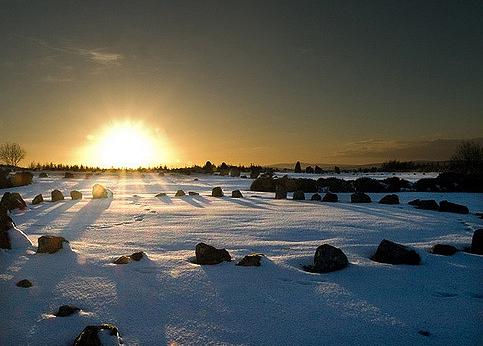Solstice / Equinox
Twice a year, on June 21st and December 22nd, we observe the summer and winter solstices. In June, when the sun is farthest north of the equator in our hemisphere, it rises at its northernmost point on the horizon and appears to halt in its progression. It then reverses its movement, rising farther and farther to the south until the day of winter solstice, when it again appears stationary on the horizon. Each solstice occurs on the day the sun “stops” in its progression.
The sun etymologically “stands still” on the days of solstice. The antecedents of this word are the Latin sol, “sun” and sistere, “stand still.” The German version of solstice is Sonnenwende, “the sun’s turning point.”
The equinoxes occur twice a year when the sun crosses directly above the equator. The vernal equinox arrives on March 21st; the autumnal equinox, on about September 22nd. On these two occasions, the hours of daylight and darkness are equal on all points of the earth. The word equinox reflects this phenomenon: it comes from a combination of the Latin aequi, “equal” and noctis, “night”. In German, equinox is Tagundnachtgleiche, “day and night equality”.






